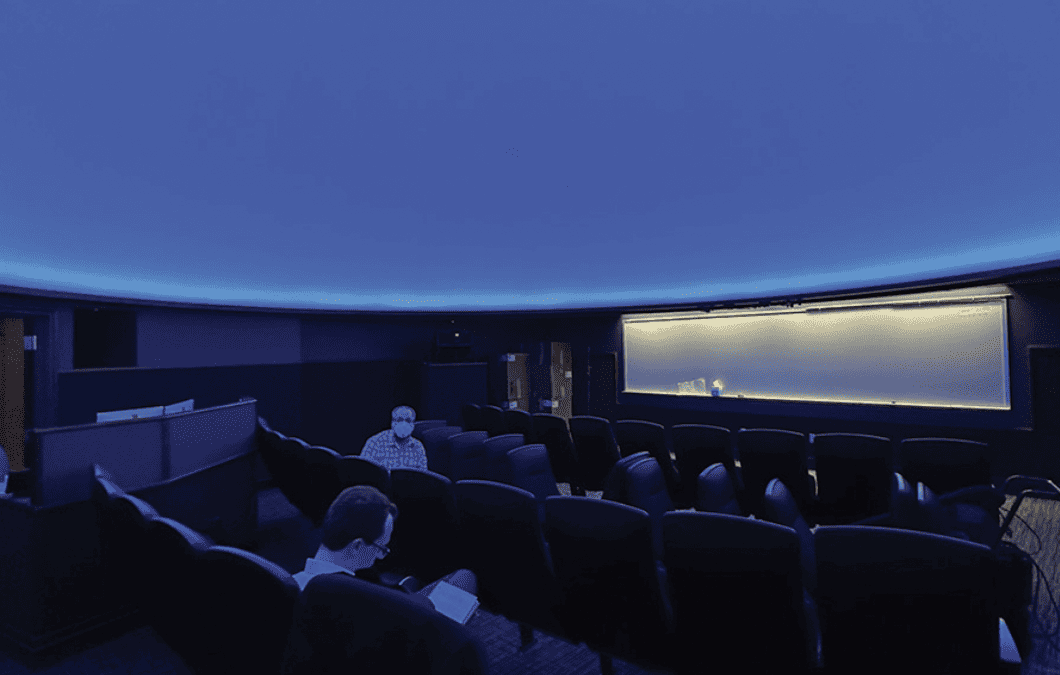Tom Vodrey, Staff Writer—
A universe of possibilities will soon open to Denison students in the basement of F.W. Olin Science Hall. A pair of state of the art projectors, 45 new plush seats and a whole lot of computing power are behind the renovations currently underway at Denison’s planetarium.
Although the old planetarium has been the site of fond memories of astronomy classes and public programming for many Denison students and faculty, according to astronomy professor Dr. Dan Homan, the nearly 30-year-old system’s limitations have become obvious with age.
“The old system was fixed, and could only show the sky from Earth,” he said. “It was a beautiful sky, but fundamentally that was it. It was fascinating but limiting, Earth’s sky is only a tiny corner of the universe.”
Dr. Homan is excited about the possibilities the new technology presents. Unlike the mechanical system it’s replacing, the new digital projectors aren’t limited to just the night sky from Earth.
“Anything you can imagine on a computer screen can now be shown on the planetarium,” he said. “Now you can fly through the galaxy, see stars being born and even the super massive black hole at the center of our galaxy.”
In a demonstration, Dr. Homan showed how Saturn, once limited to a distant dot on the old system, could now be rendered to fill the overhead screen in three dimensions, rings and all. By using data and imagery made available by NASA, the National Oceanic and Atmospheric Administration and publicly funded observatories, Denison’s planetarium will offer close to limitless reach into outer space.
“This is transformative for the astronomy program,” said Dr. Homan.
According to Dr. Homan, astronomy classes will begin to use the renovated planetarium as soon as the finishing touches are complete. He looks forward to getting to use the space for his section of Current Topics in Astronomy this semester.
“In labs or even just half an hour of class, it can be helpful to come here with my students,” he said. “The planetarium is a great place to make additional points on what we discuss in the classroom.”
Beyond astronomy, the renovated planetarium will offer new possibilities for many of Denison’s academic programs, in both science and the humanities. Geoscience, biology and data science are just a few of the disciplines that could make use of the new facility. Even art shows or IMAX movies could soon make an appearance on the planetarium’s screen.
Dr. Homan believes that the renovated system’s possibilities will become apparent as faculty and students get to use it. While training for the old projector required a semester’s worth of experience, the new system can be taught in just a few sessions.
“It’s going to take time to learn all the possibilities this brings,” said Dr. Homan.
According to University administration, the renovation was made possible through a $5 million donation by Marilyn P. McConnell, whose daughter Laura graduated from Denison in 1992. The donation includes money not only for the renovations, but also maintenance in perpetuity, community outreach and
programming.
The renovated planetarium is expected to open for public shows later in the fall semester or at the beginning of spring semester. It remains to be determined what programming will be made available, but the renovated planetarium has shot for the moon, and will soon land among the stars of Denison’s campus.

